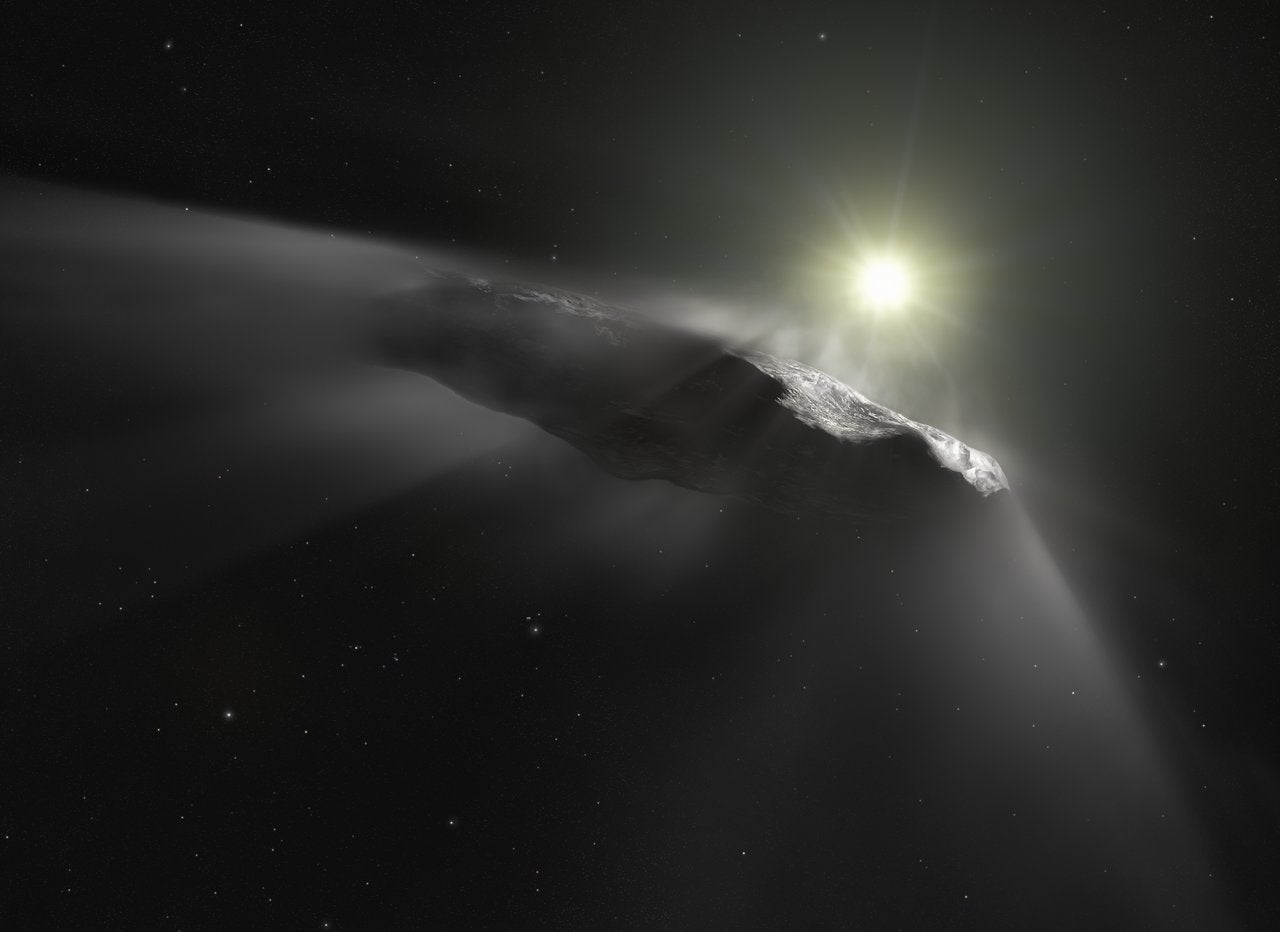Comet chaser approved to intercept visitors from outside the Solar System
The Comet Interceptor will launch in 2029

The European Space Agency has approved the construction of the Comet Interceptor mission, a small spacecraft designed to fly by either a newly discovered comet or an extrasolar object, such as the strange Oumuamua that flew through the Solar System in 2017.
The ESA Science Programme Committee adopted the mission on Wednesday, and ESA will soon select a primary contractor to begin construction of the spacecraft. The Comet Interceptor will launch in 2029, piggybacking on the launch of ESA’s Ariel exoplanet mission.
The Comet Interceptor will build on ESA’s previous successes with comet studies, including the Rosetta and Giotto missions, which visited comets 67P/Churyumov-Gerasimenko and Halley, respectively.
But both of those comets are “short-period” comets, that is, comets with relatively short orbits that have passed through the inner Solar System multiple times.
The Comet Interceptor mission, by contrast, aims to visit a pristine comet on a long orbit. Perhaps a comet from the Oort cloud — a sphere of icy small objects between a quarter to three light-years from the Sun— recently perturbed and falling toward the Sun for the first time.
Such an icy object, unthawed by the Sun and untouched by the inner Solar System, could provide scientists with a unique view into the makeup of the early Solar System.
“A true, pristine comet has yet to be encountered and explored,” the Comet Interceptor mission website reads.
“Such objects are difficult to target because they can only be discovered when approaching the Sun for the first time, leaving little time to plan and launch a mission to them.”
So unlike past missions, the Comet Interceptor will launch without a specific target in mind.
Instead, the spacecraft — really three, a main spacecraft and two smaller probes, one provided by the Japanese Space Agency — will make its way to Lagrangian Point 2, or L2, a location about 1.5m kilometers behind Earth as seen from the Sun. Terrestrial and solar gravity cancel out at L2, allowing a spacecraft to maintain a constant position relative to Earth. The newly commissioned James Webb Space Telescope also orbits L2.
Once a candidate pristine comet is identified, the Comet Interceptor will accelerate into a trajectory from L2 to intercept and fly by the target, releasing the two probes to obtain data and images from three different angles as spacecraft and comet pass each other at high velocities.
“In this way, the innovative mission will build up a 3D profile of its as-yet-undiscovered target,” an ESA blog about the mission states.
But pristine comets are not the only targets of interest.
Despite its name, the Comet Interceptor could also aim to intercept objects passing through the Solar System, such as the oblong-shaped asteroid Oumuamua, which astronomers confirmed originated from outside our star system.
Recent research has indicated that such visitors may pass through more frequently than previously thought, with Earth itself being struck by extrasolar meteors about once a decade.
Importantly though, despite speculation by a Harvard astronomer that Oumuamua was a secret alien spacecraft, the Comet Interceptor would not approach such an object under that assumption, according to a Twitter thread about the mission by ESA’s senior advisor for science and exploration Mark McCaughrean.
Join our commenting forum
Join thought-provoking conversations, follow other Independent readers and see their replies
Comments
Bookmark popover
Removed from bookmarks